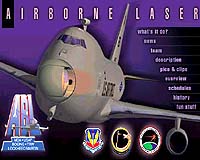A possible solution for the Scud problem. We may could have a couple of laser platforms for next year? See below:
Published: Friday, May 31, 2002
747-400 with anti-missile laser ready for testing
Herald staff
The first airborne laser anti-missile aircraft is ready for ground and flight testing, the Boeing Co. announced Thursday.

the only way to repeatedly hit a "bullet" will be with a laser beam
Workers at Boeing's Wichita, Kan., modification center have completed the overhaul of the Everett-build 747-400F that will carry the laser system, the company said.
It was the largest modification project ever done by Boeing, dwarfing such modifications as Air Force One and requiring about 1.6 million hours of work, the company said.
The plane is intended to be the first of a fleet of seven jets that will use chemically generated laser beams to shoot down enemy missiles shortly after they are launched. The tightly focused photon beams wouldn't actually explode the missiles, but they would melt through their sides, causing the pressurized rocket fuel within to burst.
The work done at Wichita included modifying the front of the plane so it could handle the 1,500-pound laser turret mounted in the nose, and strengthening the floor to hold up the area in the back of the plane where chemicals will be mixed to create the energy for the laser's beam. Boeing workers also installed an airtight bulkhead to seal off the crew area from the space where chemicals will be mixed.
The first flight test is expected this summer, Boeing officials said. The plane will actually return to Everett sometime toward the end of this year to be painted, Boeing spokesman Bob Smith said.
After that, it will be flown to Edwards Air Force Base in California, where the laser will be installed.
The first live-fire test against an actual missile is scheduled for sometime in 2004. That's about a year behind the original schedule.